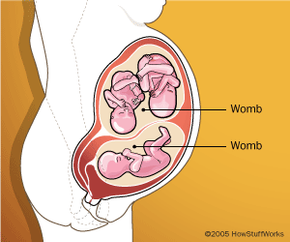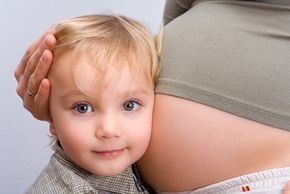Uterus didelphys -- or a double womb -- is a pretty rare condition. It affects anywhere from about one in 1,000 to one in 1 million women worldwide, and it sometimes occurs in families. In some cases of double wombs, those two wombs share a set of Fallopian tubes, ovaries, a cervix and a vagina; other times, a girl is born with two of everything -- two wombs, two sets of Fallopian tombs and ovaries, two cervixes and two vaginas. A woman can have a surgical procedure to join her two vaginas into one, but the wombs are typically left separate. The condition usually occurs when the Mullers ducts of a developing fetus never fuse into one uterus, as they're supposed to.
In December 2006 in Britain, three babies were born from two separate wombs inside the same woman. As far as the medical community knows, only about 70 women with uterus didelphys have ever been simultaneously pregnant with one baby in each womb. The chances of it occurring are about 5 million to one. Fewer of those women have carried one or both babies close to term. The chances of a woman with two wombs being pregnant with three babies -- two in one womb, one in the other -- are about 25 million to one. And the chances of all three babies surviving are even slimmer. Twenty-three-year-old Hannah Kersey's three daughters might be the only ones, at least in recorded medical history.
Advertisement
Advertisement



